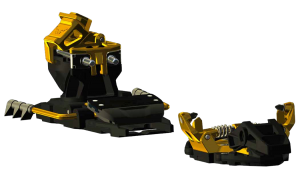
To commemorate 30 years making BC bindings Dynafit will offer a gold anodized version of the Radical next season
As the backcountry beckons to the next generation of skiers, manufacturers have been quick to build whatever contraption fit their imagination to give a passport out of bounds. Except Dynafit. They simply said, the further you go the more you want what we have.
With hundreds of thousands of converts in the USA, and who knows how many million world-wide, the Dynafit revolution is now in full swing. Not just that there are other brands to choose from now, as there have been for a while. But now there are some different concoctions, if you will, of the plateless 2-pin Tech concept. Based on the flowering of competitive ideas being introduced it seems there are plenty of details that can be spun a different way without adding much, if any, weight.
Consider just three characteristics of the classic Dynafit tech system:
- The fiddle factor of connecting at the toe
- Exiting at the toe to free the heel
- Limited elasticity leading to prerelease and/or loss of confidence
These limits have been accepted by users in exchange for touring efficiency and no frills downhill functionality. Next year’s offerings challenge those limits.
Dynafit
The originator and still king of the hill, Dynafit has hardly been sitting on their laurels lately. Two seasons ago the Radical was introduced, with power-towers for easier entry and a heel piece that lets you shift-on-the-fly with a light flick of a ski pole to switch between medium or high climbing posts. The cost was eliminating the ability to shift modes by spinning the heel around with a ski pole. Like skiing with the toes locked out, it was never an officially recommended manuever.This year saw the introduction of the Beast 16, a 2-pin tech binding that allowed for gobs of heretofore unheard of elasticity, both in the toe and heel. The cost was a 60% increase in weight, a commensurate increase in price, and the elimination of a flat touring mode. None of these costs seem worth it for backcountry aficionados who were okay with the old compromises. It remains to be seen if more elasticity, bulk and weight can convince in-bounds chargers to consider Dynafit as their binding brand of choice everywhere they ski.
Admittedly the extra weight is anathema for out-of-bounds so next season Dynafit will be offering the Beast 14, a lighter, trimmer version of the Beast 16. The same angular movement in the toe is at work in the Beast 14, but in a far less bulky package. At the heel, the Beast 14 simply scales back on the springs, again, trimming weight.The Radical series will be upgraded in 2015 with the rotating toe of the Beast and a beefed up heel that has spring travel to absorb forward pressure. Christened the Radical 2.0 Roto, a Radical Beast if you will, it delivers a flat tour mode and elasticity at a reasonable weight. Sounds awesome actually, especially when you realize it also comes with a tougher, stronger heel, a better AFD pad, and no restrictions on which way you rotate the heel.
G3
The engineers at G3 have been hard at work the past three years taking what they learned with Onyx and applying it to the classic tech paradigm to come up with Ion. The first thing you’ll notice about Ion is the electric orange glow that emanates from the anodized aluminum parts, alluring without being blaring.Stepping in is almost as easy as a step-in. No slow twisting of the foot to line up the 2nd insert while you carefully weight the boot to close the pins – just slide your boot in flat ’til it lines up with the plastic boot posts – tap down and BAM!– you’re in. To say that mountaineers don’t need no stinkin’ step-in bindings is to forget how compelling that convenience can be.
The other big change in the Ion over other tech bindings is the fulcrum position of the arms, also called the wings, of the toe piece. It is much higher and a little bit wider than other tech bindings. In combination with stronger springs it yields a higher force on the toe inserts, to keep you in when vibration might rattle you out.Unlike Onyx, you do need to exit the binding to switch to a free heel, and once you do, you can rotate the heel whichever way you want. The symmetric climbing posts stack one atop the other to give you a medium or high climbing post just by flicking the spring loaded posts up with your ski pole. Plus the heel moves along an spring loaded axis to account for changes in length when the ski flexes.
Overall a very compelling package that weighs a pound and a quarter per foot. Not bad, not bad at all.
Fritschi Diamir
There’s nothing new about Vipec except for the fact that it is available now, not next fall. In case you missed it, the Vipec 12 threatens to really upset the 2-pin tech world by offering lateral release at the toe, forward pressure at the heel, and true shift-on-the-fly mode switching between a locked or free heel, for turning or striding.As with many of the new generation of tech bindings, the best way in is to line your foot up flat with the pins, then tap down and the pins snap tight in the inserts. The classic, hook one side, then angle down to the other side doesn’t work well, but tapping the release wire underneath with a flat foot works surprisingly easy. Lacking any sort of alignment posts like the Ion or Radical makes one wonder how easy it may be when you don’t have a flat platform to work from. Unlike other bindings being introduced at this show, feedback from the field should be visible on the web before too long. (See Related Posts below)
Olympus Mountain Gear
One might say OMG’s Mark Lengel isn’t trying to reset the bar with the first American made 2-pin tech toe even though it is a critical component of his head-turning Telemark Tech System. Indeed, he isn’t redesigning the basic toe in any dramatic fashion like everyone else is. However, don’t lose sight of the fact that he has migrated a concept firmly grounded in the locked heel realm and adapted it to the free heel world. What’s that saying — “Free your heel and the mind will follow”? One can’t help but wonder where a telemark binding with a 2-pin tech toe will lead us, but you can rest assured that when imports cease we’ll still be able to get our tech toes stateside, thanks to Mark Lengel and a little collaboration from the folks at Voile USA who are doing the final assembly.Ski Trab’s TR2
Those who have followed the tech world for a few years know that the Italians at Ski Trab are fully invested in the skimo race world. Thus, interest in a 2-pin tech binding has been a product they have dabbled with for awhile. Next year we get to try it ourselves. Called the TR2, Ski Trab implements a 2-pin toe piece that snaps, not from the bottom up as is common with all other tech bindings, but from the sides in. By snapping the pins in from the side, merely opening the jaws allows for lateral release, and greater retention. Lateral release can be adjusted from 7 to 13, with a lock out for touring. In addition, the heel of the boot is held down more like a traditional alpine binding by pressuring the heel step, not by latching in with pins to the heel insert. As with the Vipec or Onyx, you can shift-on-the-fly to a free heel without exiting from the binding. As nordic skiers know, you don’t always need skins when you want a free heel, but when you need walkability, training heels suck.Plum
Yes, there really is a brake available for Plum bindings and it mounts to the toe. However, it isn’t available stateside. Not yet. Cross your fingers.
It’s a big, big world out there. Now there’s lots of choices to make seeing it all that much easier.
Related Posts
Fritschi Fixes Vipec’s Toe Woes (October 2014)
Devilish Details of Fritschi’s Vipec (May 2014)
First Look: Fritschi’s Vipec 12 (December 2013)
Review: OMG’s Telemark Tech System – Beta, not Betta’ (April 2014)
Review: Plum’s Yak and Guide (September 2013)
First Look: Dynafit’s Beast 16 (October 2013)
Review: Dynafit’s Radical (October 2012)
First Look: G3’s Ion (January 2014)
Review: G3’s Onyx (November 2012)
© 2014

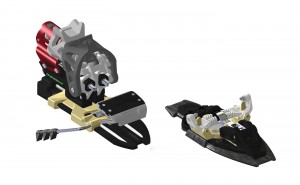
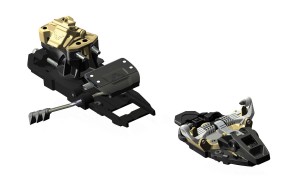
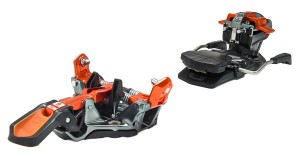
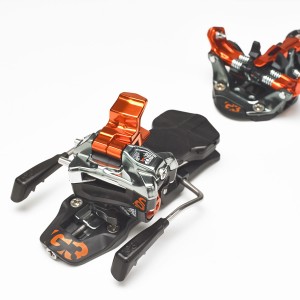
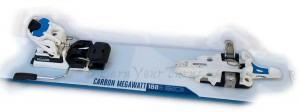
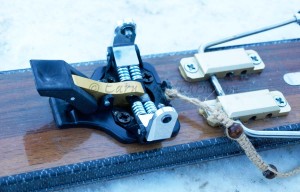
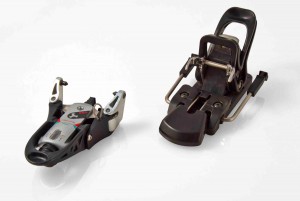
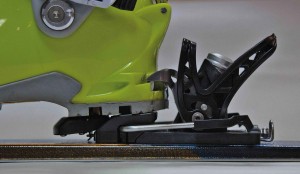
Recent Comments